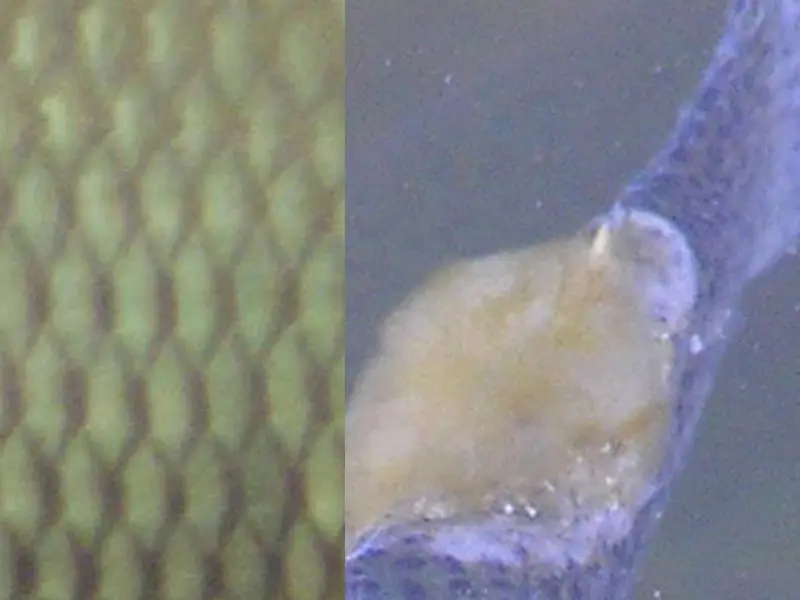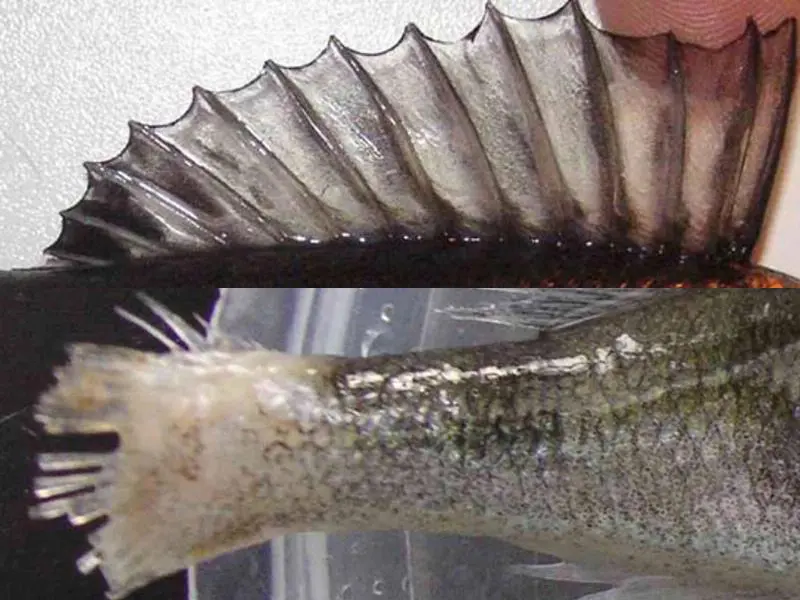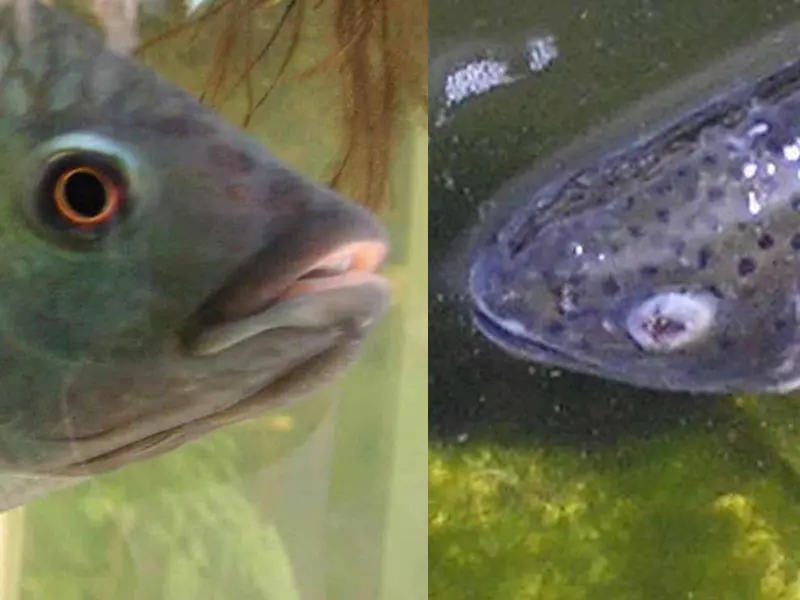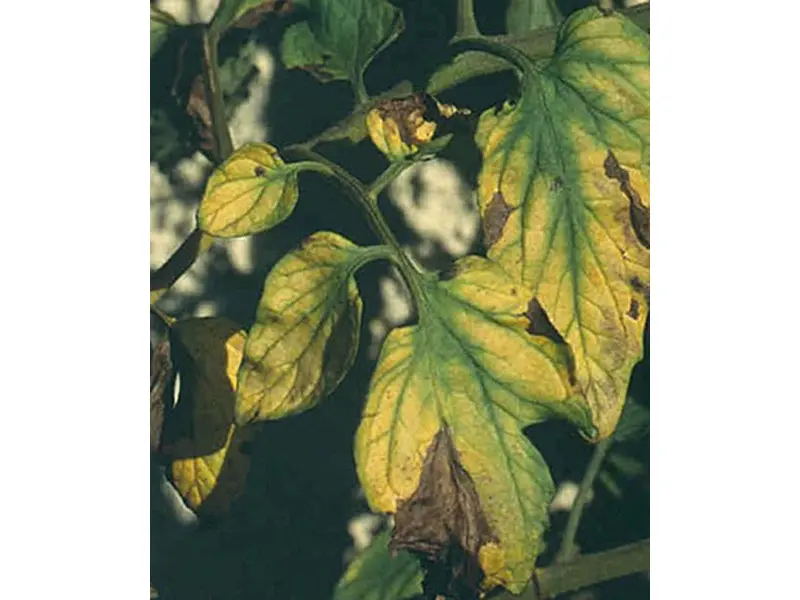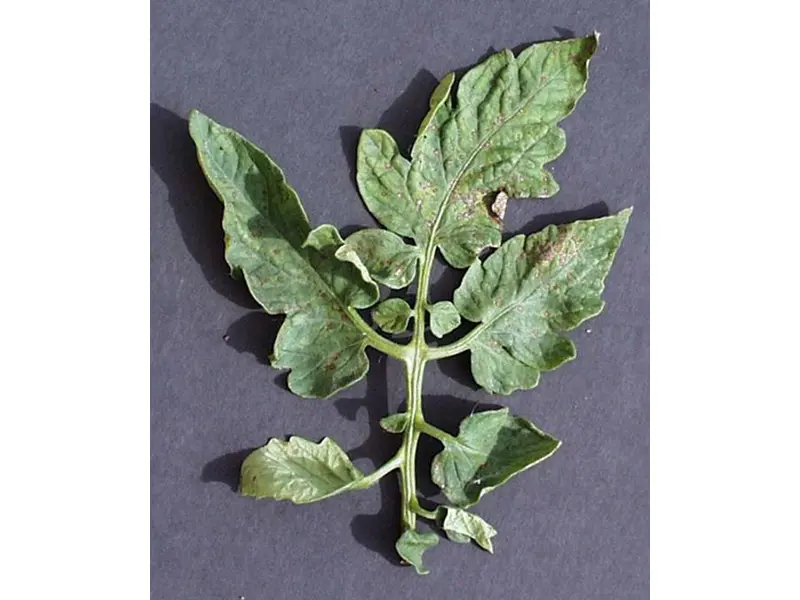Day to day handling of fish and plants in the aquaponic systems
This experiment focuses on the day to day handling of fish and plants in your already established aquaponic system (please carry out experiments 1-3 of this teaching unit first). It gives you useful hints about monitoring the plants, the fish and the system as a whole.
Learning goals
- Know what are the daily, weekly and monthly tasks when maintaining an aquaponic system
- Know what is causing stress to fish and what to do about it
- Be able to make a fish health check up by observing different body characteristics
- Know what can make your plants ill and what to do about it
Background information
Previous testing of the teaching unit showed that the classroom aquaponic system offers a large potential to arouse interest in food chains, ecosystems, and ecology in general. A model system with living fish and plants in a classroom, combined with the observation and care, can contribute to sensitise pupils to develop an understanding of sustainable systems.
The function of the aquaponic system can be combined in context with the entire ecosystem of the earth. Both can only exist, if environmental conditions are present, which allow all involved life forms to optimally thrive and to realize their role in the system. If certain components or entire partial systems were destroyed or arranged incorrectly, the entire system would not react over time as we would wish.
Time requirement
Usually a few minutes per day.
Material requirement
See experiments 1-3 of this teaching unit!
Let's start
A sound running aquarium has clear water, and the plants and fish are growing well and looking healthy. It is of great importance to compile a list of all the specific tasks and to make the pupils responsible for one or more.
Daily tasks
- report time of feeding and amount of feed (daily amount of feed corresponds to 1-2 % of fish body weight).
- observe the fish during feeding (for example: no fish eating / fish eat less than normal / fish eat normally / fish eat aggressively); observe fish that do not feed carefully and try to figure out why (are they too stressed by other fish / are they injured or sick?); maybe you can attract shy fish by feeding at several places at the same time.
- check, if there are any dead or ill fish. This is best done during feeding time, at other times observe swimming behaviour and territorial range. A fish that is hiding has weaknesses.
- check water temperature (it should be between 18-25°C, depending on fish species)
Weekly tasks
Some tasks don't have to be done every day but at least once a week:
- plant control for pests (white flies, spider mite, cooties etc.) and disease
- clear away rotten leaves
- replace evaporated water
- measure pH (tolerance value: 6.5 - 8); if you suspect a problem in water quality, measure immediately
- measure nitrate (tolerance value: 10-100 mg/l)
Monthly tasks
Clean Aquarium thoroughly:
- Suck away sediments from the bottom and between plants using a cleaning tube in a bucket, throw this water away and replace it.
- Remove old and damaged plant leaves.
- Control filter pump; if necessary, disassemble and clean the rotor with a tooth brush.
- Control plant buckets. Important: no clogging of outflows, no anaerobic sludge concentrations, wash bucket completely, removing it from the system. Plant replacement can be done at any time, just not all biomass at once. Never clean all filter buckets at once: you could loose too many helpful bacteria.
ANIMAL PROTECTION ISSUES
Whenever fish are stressed during handling of the system they become vulnerable to injuries and diseases. Therefore, proper care at all times is important.
Cause of stress and how to reduce it
- Poor water quality: Observe pH, ammonia, nitrate and nitrite as explained in Experiment 2. If the values are out of range, stop feeding or change half of the water volume.
- Wrong water temperature: The water temperature of your tank should match the needs of the fish species. Make sure the aquarium isn't exposed to too much sunlight, for it will heaten up. Intensive lighting can cause a daily temperature fluctuation, too.
- Low oxygen concentrations: When the fish start breathing hastily or they even swim to the surface and gasp for air, this is a sign for low oxygen concentration. Note that as the water temperature increases, the amount of dissolved oxygen in water decreases. Check ammonia and nitrite, if they are tolerable, pause feeding for two days and continue feeding on a reduced level. If they are out of range, change half of the water volume.
- Sudden changes in water conditions: Within limits, most fish can adjust to sub-optimal water conditions. However, fish have difficulty adjusting to sudden changes in water chemistry. So try to avoid them whenever you have to dislocate a fish. This is the case when you buy new fish (see Exp. 3 «Establishing fish and plants...»), or when you change the water as a maintenance task.
How do you proceed when changing the water? Only change part of the water, it is better to change more often but lower volumes than 80 % every six months. Over time, the water will get a yellowish/brown touch, indicating that humic acids, a residue of carbon breakdown, have accumulated. So you can take visual observations and smell as guiding criteria how often to change the water. With low fish biomass, it is probably enough to change a third of the water every month or you even might not have to change it at all. With higher stocking, it may be necessary to change a third of the water every week. If not for emergency cases, water change should not be intensified any further.
- Diseases and injuries: Observe fish behaviour and make health check-ups as described below. Sort injured or sick fish out in a separate vessel to provide time to cure. Remember that this vessel needs proper filtering, too! Otherwise you could insert a plastic box into the aquarium, and keep it floating with styropor supports (drill holes into the sides to enable water exchange).
- Stress due to incautious handling of the fish: Make sure not to injure the fish skin because the slime above the scales works as a microbial barrier between the body and the water. Only handle fish with wet nets and wet hands.
- Escapes: Cover basins in a way that fish can't jump out of the aquarium (cover with glass, or better plastic coated metal grids: they are easier to adapt because of backflow water). When handling the fish, always keep them in a net in order to have a controlled grip on them.
- Mixing of different species: Not all species of fish mix well with others. For example, most cichlids will eat smaller tank inhabitants. Peaceful fish will be stressed if kept with aggressive fish that chase them around all day. Ask your pet dealer, and heed his advise about mixing fish species.
- Poor nutrition: Make sure, the diet is balanced and adapted to the fish species as described in experiment 3 ("Establishing fish and plants..."). Take any uneaten food out of the water and make sure not to overfeed the fish!
See and feel
FISH HEALTH CHECK LIST
- SKIN
healthy: Clear, transparent, smooth, slime not visible
sick: Unclear, cloudy, open wounds, wounded fish scales, reddened areas, visible parasites, skin color dark or with dark stripes, slime grey or dark and visible - SCALES
healthy: Close-fitting, flat, coherent
sick: Sticking out, looking separated - FINS
healthy: Undamaged
sick: Frayed borders, damaged by parasites or even bitten off - EYES
healthy: Clear
sick: Unclear, milky, cloudy or even severely damaged - GILLS / BREATHING
healthy: Constant, calm, mouth opening and gills moving only slightly gill coverings closing tight to the body
sick: Very fast breathing, gasping for breath, mouth wide open, gill coverings standing out from the body and not closely fitting - BEHAVIOUR
healthy: Calm, not shy when being fed
sick: Nervous, shy, looking for cover, rubbing themselves at rough surfaces, gasping for breath, disoriented swimming, swimming belly up. - INJURIES / SICKNESS
healthy: none
sick: Parasites, injuries by other fish, sickness due to bad water quality
PLANT HEALTH
Plants in aquaponic systems are usually less vulnerable than fish. However, you might observe that some of your plants don't look so good. Here are some symptoms which indicate that the plants are not well and a possible explanation to them.
- WHITE LAYER ON LEAVES
Possible cause: Blight
What can be done: Cut out the affected leaves.
- LITTLE GREY, GREEN OR WHITE INSECTS ON LEAVES
Possible cause: Plant louse
What can be done: Biocontrol with ladybird larvae (Adalia bipunctata) or spray with soapy water
- YELLOW LEAVES
Possible cause: Lack of water
What can be done: Check irrigation of the plants - LEAVES ROLLED IN
Possible cause: Virus or pest affection
What can be done: Take away affected parts of plants or even the whole plant.
Didactical comments
None.
